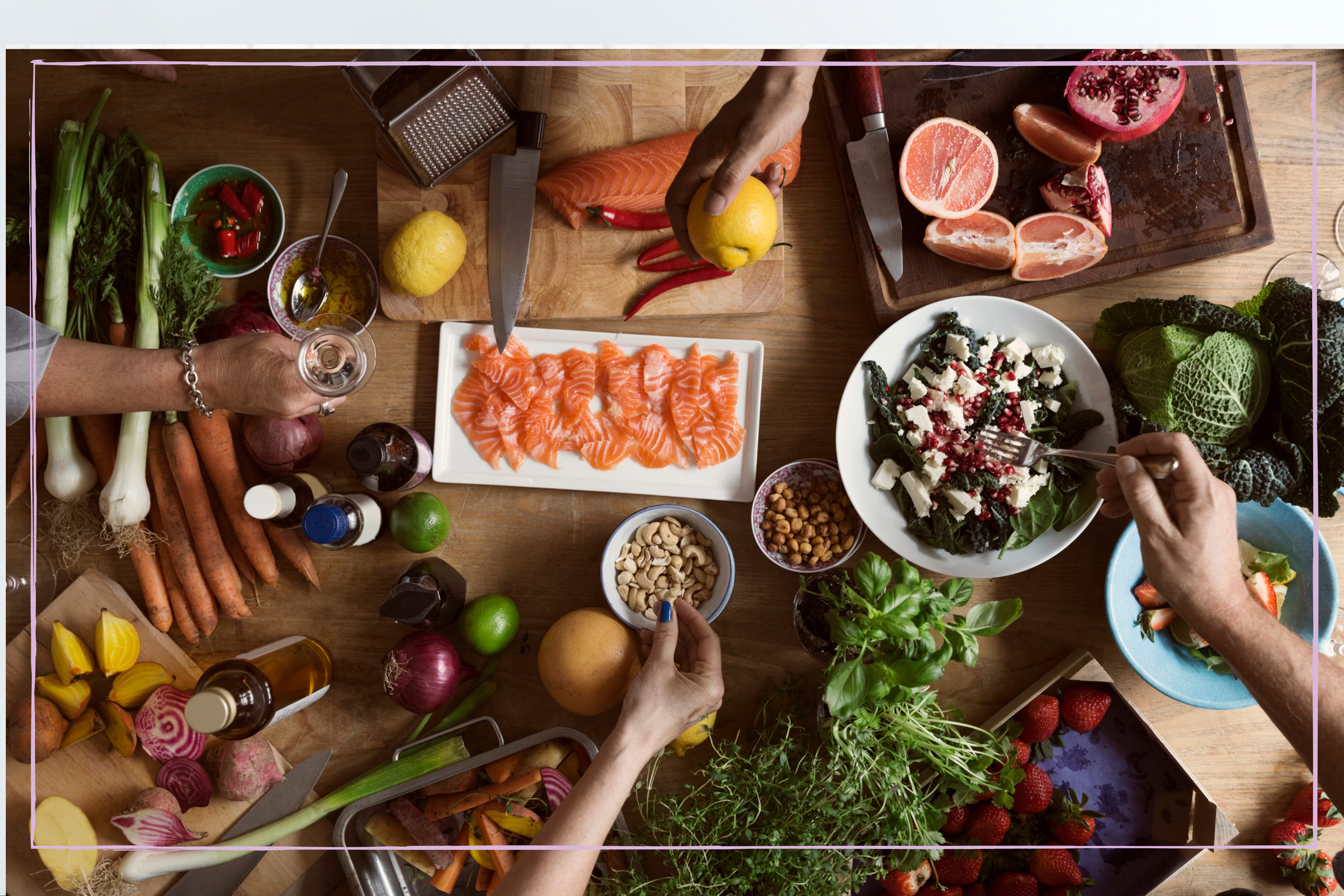What is the eco-friendly Nordic diet? Tips for eating fresh, local and healthy foods
The Nordic diet is a simple philosophy that makes sense


Similar to the Mediterranean Diet, the Nordic Diet is based on produce found in a specific part of the globe - and it's among the healthiest diets in the world.
The Nordic region includes northern European countries like Denmark, Norway and Sweden. The UK's climate is more like that of northern Europe than the Mediterranean, which makes it a perfect eating plan for us, because a big part of the theory behind it is to eat local, seasonal produce.
The Nordic Diet encourages an all-round healthy lifestyle including exercise, avoiding junk food, upping your fruit and veg intake and reducing the dairy and fat in your diet. it also advises eating less meat, lots of fish, have smaller portions and to enjoy home-cooked food with family and friends as often as possible.
And, because you're encouraged to eat local, seasonal food, (you can check what's in season with our clever food calendar), Trina Hahnemann who wrote 'The Nordic Diet' says: 'Growing food in the garden is a great way to save money and guarantee quality. If you want to try your hand at it, kale is easy to look after, grows throughout the winter and is delicious in salads and soups.'
And, of course, it's better for your pocket and the environment as your food hasn't had to travel in a plane from overseas or in a lorry from the other end of the country. Here are some of the foods the diet suggests you eat:
- Wholegrain spelt, rye and barley - high in fibre and rich in protein
- Cabbages including white red and savoy - low in calories and full of antioxidants and omega-3 fatty acids
- Root vegetables like beetroot, parsnips and carrots - low in calories
- Green veg like peas, spinach and leeks - full of nutrients
- Fish like salmon, mackerel and haddock - rich in protein and nutrients
- Free-range or organic chicken - high protein, low in saturated fat
- Berries like raspberries, blueberries and strawberries - high in antioxidants
- Herbs like dill, parsley, mint and tarragon - full of nutrients.
Are there any drawbacks? Well, as the Nordic diet says you should eat seasonal, local food where possible, so no more strawberries in winter that have been grown in Egypt. Although this isn't possible 100% of the time, if you're trying to stick to it with fruit, veg, meat and fish, you could get a bit bored during the colder months. Also, as you're advised to avoid ready meals and processed food, you'll need to spend more time in the kitchen.
Tips for following a Nordic diet
- Eat seasonal food - This means sticking to fruit and veg like root vegetables, pears and apples in winter and saving berries and asparagus for the summer months. If you're not sure when things are in season, use our seasonal food calendar. This isn't possible to do 100% of the time as things like tea, bananas, coffee and wine aren't made in the UK, and the diet isn't that strict that they're banned! The seasonal rule is mainly for fruit, veg, meat and fish that is available in the UK at some point in the year.
- Eat less and eat well - There's no calorie counting on this diet, but you are encouraged to eat less. Trina suggests you do this by buying smaller plates. That way you won't feel hard done by as your portions still look full-sized. She also says that the more time we take cooking really tasty meals, the more satisfied we'll feel afterwards, even if we've not eaten as much as normal.
- Get moving - The Nordic Diet is about your lifestyle as a whole, not just what you eat. Trina's not suggesting we all become gym-obsessed marathon runners, but she does want us to get up off our backsides at every opportunity. Bringing movement into our lives involves walking up the stairs at work, leaving the car at home and walking to the shops and taking your bicycle to the park and having a kick about with kids.
- Fish and meat - Eat fish two or three times a week and eat chicken and meat twice a week only. Make the rest of your meals up with veggie dishes.
- Get cooking - Cook from scratch, using fresh ingredients. If you eat bread, the diet encourages you to make your own as shop-bought bread can contain lots of refined ingredients and additives to make it last plus it has few nutrients.
- Drinks - Drink 2 litres of water every day. Always have skimmed milk in tea and coffee and try not to have so much caffeine that it makes you jittery. This may make you want to snack more. Try replacing a few of your daily cups of tea and coffee with herbal or fruit teas like green or chamomile tea.
Parenting advice, hot topics, best buys and family finance tips delivered straight to your inbox.

Jessica Dady is Food Editor at GoodtoKnow and has over 12 years of experience as a digital editor, specialising in all things food, recipes, and SEO. From the must-buy seasonal food hampers and advent calendars for Christmas to the family-friendly air fryers that’ll make dinner time a breeze, Jessica loves trying and testing various food products to find the best of the best for the busy parents among us. Over the years of working with GoodtoKnow, Jessica has had the privilege of working alongside Future’s Test Kitchen to create exclusive videos - as well as writing, testing, and shooting her own recipes. When she’s not embracing the great outdoors with her family at the weekends, Jessica enjoys baking up a storm in the kitchen with her favourite bakes being chocolate chip cookies, cupcakes, and a tray of gooey chocolate brownies.